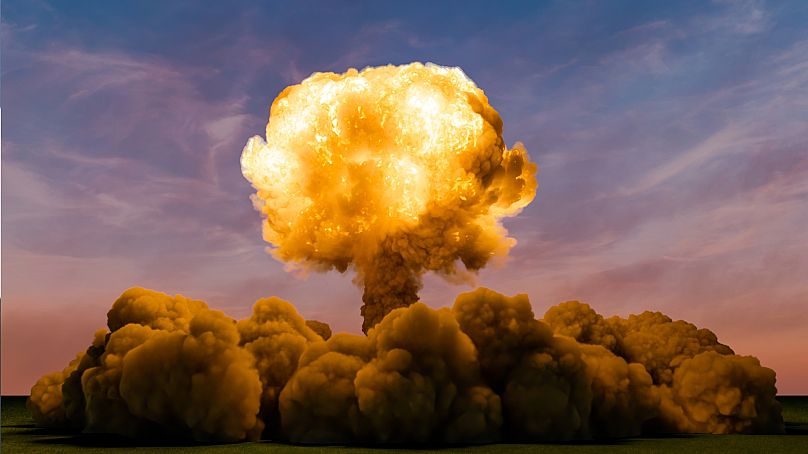20 November 1983: 'The Day After' is released.
On this day, a film was released that made the world see nuclear war in a new way.
40 years before Cillian Murphy’s sallow cheeks haunted audiences in Oppenheimer (in between viewings of Barbie of course), a different film rocked the world of a record number of people.
The television movie The Day After was aired by the ABC Network today in 1983 and was watched by over 100 million people. Nearly 39 million households across the US tuned in to make it the most watched television movie of all time, a record it would keep until 2009.
Directed by Nicholas Meyer after he’d made fan-favourite Star Trek II: The Wrath of Khan, the film featured an all-star cast (including JoBeth Williams and John Lithgow) playing the roles of ordinary people in Kansas and Missouri reacting to the events of a nuclear war.
When a conflict between NATO and the Warsaw Pact breaks out over a Soviet blockade of West Germany, the US deploys their nuclear arsenal in a show of strength. The policy of mutually assured destruction inhibiting either side’s use of such weapons now over, the USSR strikes back against the US.
Much of the film’s focus is two bombs landing on the Kansas and Missouri cities that the characters live in. The harrowing footage of the destruction of the cities, the vaporisation of countless civilians, and the following calamity blew audiences away. In the final edit, many of the most horrifying scenes were cut from the broadcast. Graphic scenes of human bodies flayed and melted from the blast were removed, alongside others depicting the violent lengths people would go to for survival in the wake of the attack.
In lieu of those more grotesque scenes – and probably as a bit of a flex – the film ends with a notice that the film is fictional and that the real-life version of events would be even worse than what’s just been depicted.
The television event of the year was preceded by a huge advertising campaign. The US was in the height of its nuclear anxiety and the adverts focused on the breadth of violence that the films would portray. Despite that violence – in fact because of it – ABC encouraged entire families to watch the film together to raise awareness of the dangers of nuclear armageddon.
The Day After had a huge viewership in the US, with showings following later in the USSR, China, North Korea and Cuba. It was a sensation. Although not completely loved by critics, it led conversation globally on the danger of nuclear arms proliferation.
Perhaps its greatest achievement was influencing then-US President Ronald Reagan. He saw an advanced screening of the film and found it deeply affecting, claiming it altered his beliefs around the country’s current policy on nuclear war.
In 1987, Reagan and USSR Premier Mikhail Gorbachev signed the Intermediate-Range Nuclear Forces Treaty.
Following the signing, Reagan sent Meyer a telegram that read: “Don't think your movie didn't have any part of this, because it did.”












